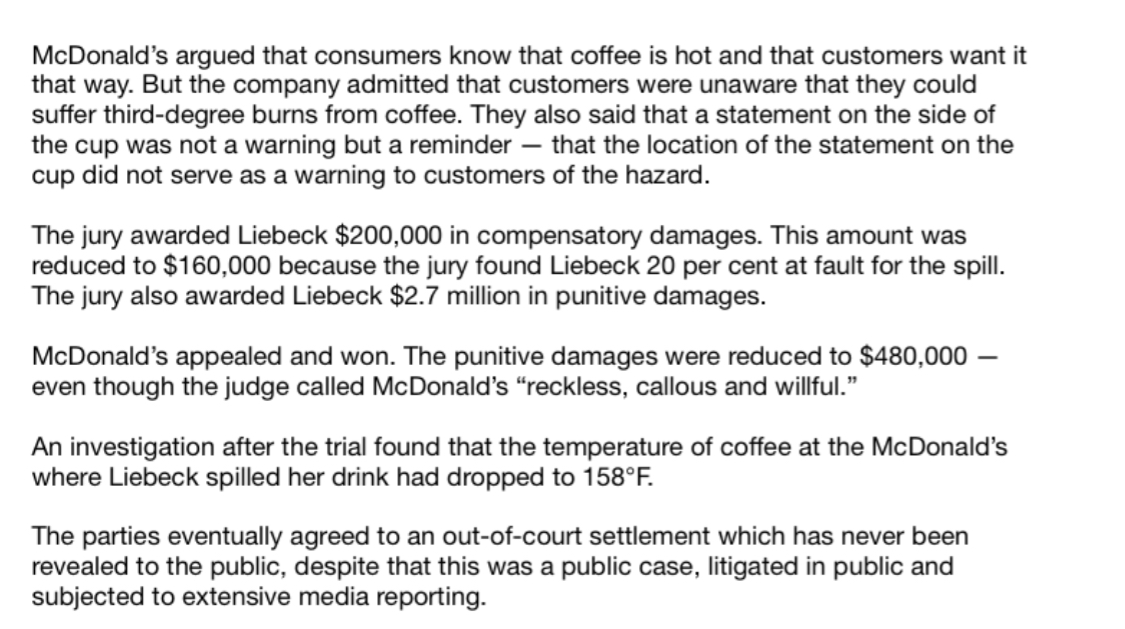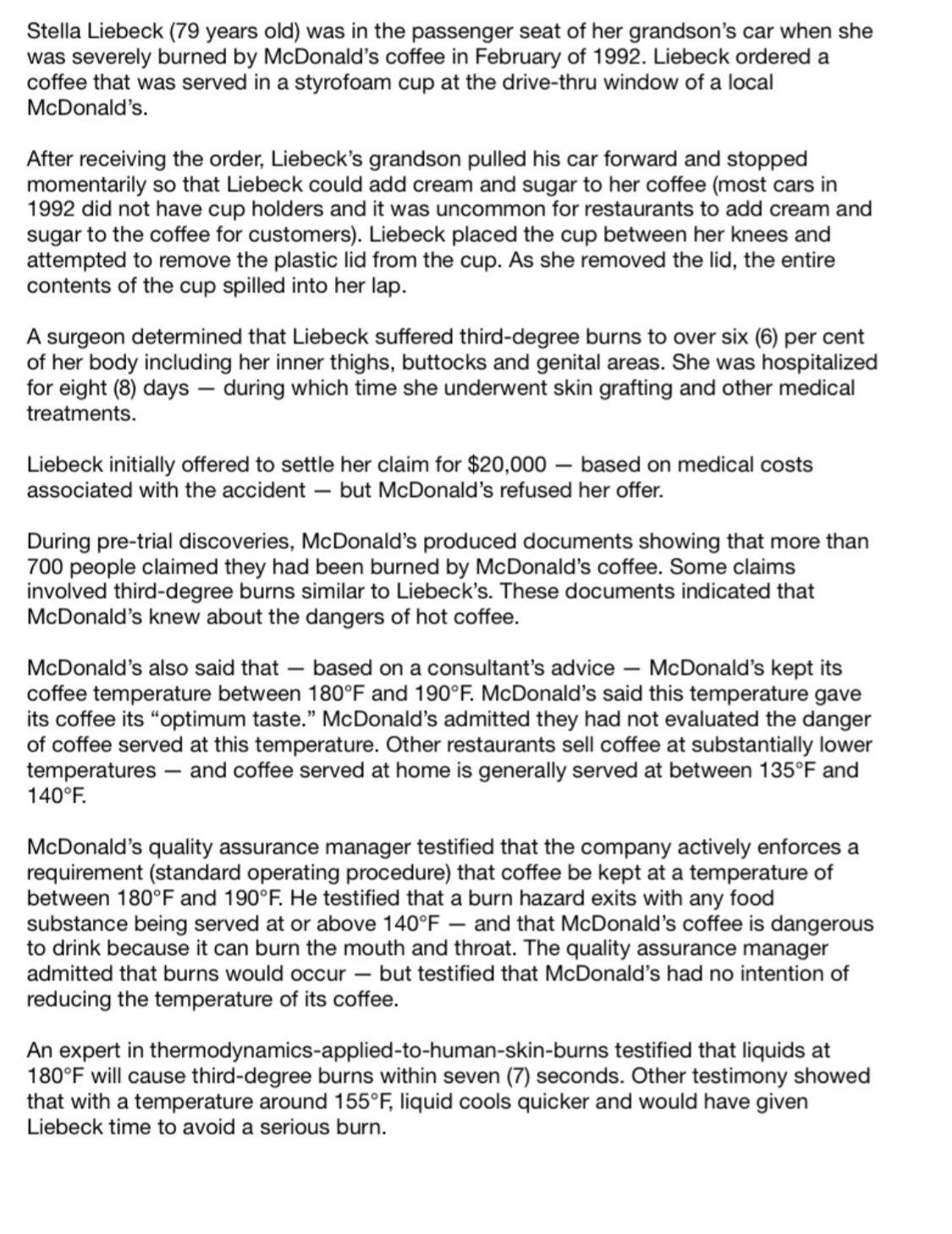what is the significance, if any, of the fact that after the trial, the temperature of the coffee was lowered to 158'F?
McDonald's argued that consumers know that coffee is hot and that customers want it that way. But the company admitted that customers were unaware that they could suffer third-degree burns from coffee. They also said that a statement on the side of the cup was not a warning but a reminder that the location of the statement on the cup did not serve as a warning to customers of the hazard. The jury awarded Liebeck $200,000 in compensatory damages. This amount was reduced to $160,000 because the jury found Liebeok 20 per cent at fault for the spill. The jury also awarded Liebeok $2.7 million in punitive damages. McDonald's appealed and won. The punitive damages were reduced to $480,000 even though the judge called McDonald's \"reckless. callous and willful.\" An investigation after the trial found that the temperature of coffee at the McDonald's where Liebeck spilled her drink had dropped to 158F. The parties eventually agreed to an out-of-court settlement which has never been revealed to the public, despite that this was a public case, litigated in public and subjected to extensive media reporting. Stella Liebeck (79 years old) was in the passenger seat of her grandson's car when she was severely burned by McDonald's coffee in February of 1992. Liebeck ordered a coffee that was served in a styrofoam cup at the drive-thru window of a local McDonald's. After receiving the order. Liebeck's grandson pulled his car forward and stopped momentarily so that Liebeck could add cream and sugar to her coffee (most cars in 1992 did not have cup holders and it was uncommon for restaurants to add cream and sugar to the coffee for customers). Liebeck placed the cup between her knees and attempted to remove the plastic lid from the cup. As she removed the lid. the entire contents of the cup spilled into her lap. A surgeon determined that Liebeck suffered third-degree burns to over six (6) per cent of her body including her inner thighs, buttocks and genital areas. She was hospitalized for eight (8) days during which time she underwent skin grafting and other medical treatments. Liebeck initially offered to settle her claim for $20,000 - based on medical costs associated with the accident but McDonald's refused her offer. During pre-trial discoveries. McDonald's produced documents showing that more than 700 people claimed they had been burned by McDonald's coffee. Some claims involved third-degree burns similar to Liebeck's. These documents indicated that McDonald's knew about the dangers of hot coffee. McDonald's also said that based on a consultant's advice McDonald's kept its coffee temperature between 180F and 190F. McDonald's said this temperature gave its coffee its \"optimum taste.\" McDonald's admitted they had not evaluated the danger of coffee served at this temperature. Other restaurants sell coffee at substantially lower temperatures and coffee served at home is generally served at between 135F and 140F. McDonald's quality assurance manager testied that the company actively enforces a requirement (standard operating procedure) that coffee be kept at a temperature of between 180F and 190F. He testied that a burn hazard exits with any food substance being served at or above 140F and that McDonald's coffee is dangerous to drink because it can burn the mouth and throat. The quality assurance manager admitted that burns would occur but testified that McDonald's had no intention of reducing the temperature of its coffee. An expert in thermodynamics-applied-to-human-skinburns testified that liquids at 180F will cause third-degree burns within seven (7) seconds. Other testimony showed that with a temperature around 155F. liquid cools quicker and would have given Liebeck time to avoid a serious burn








